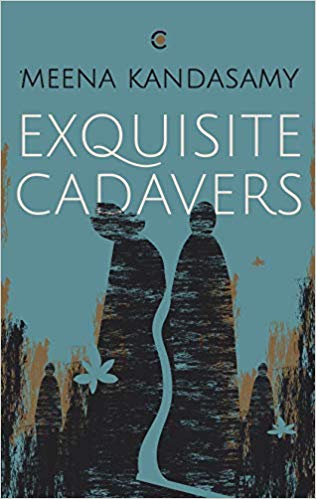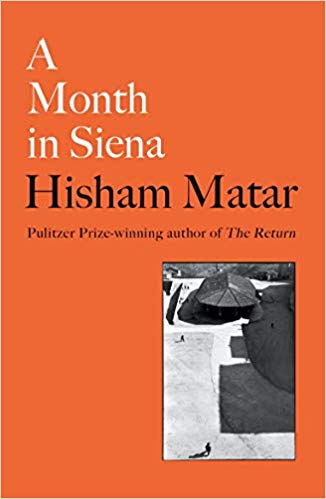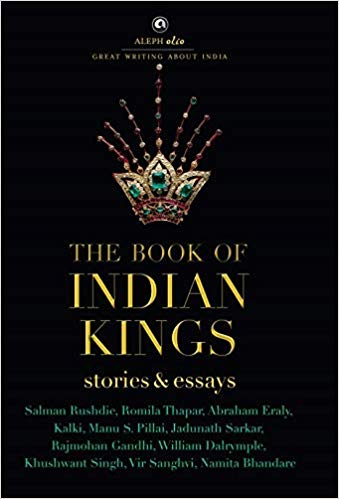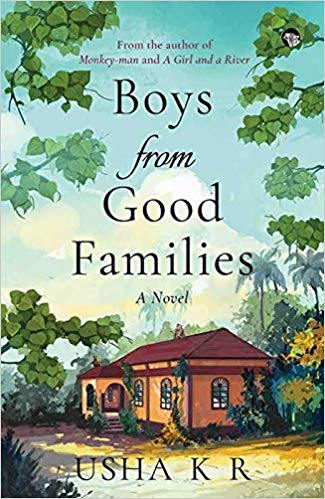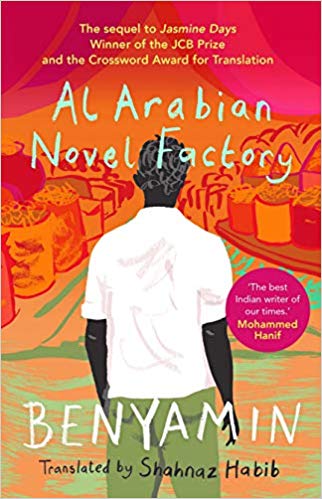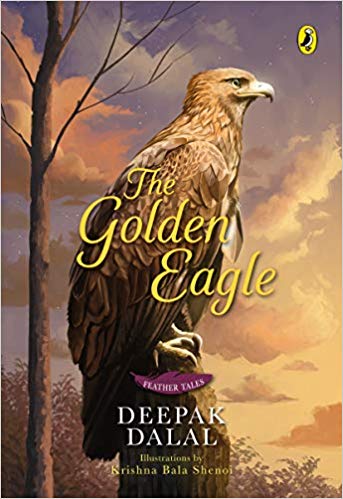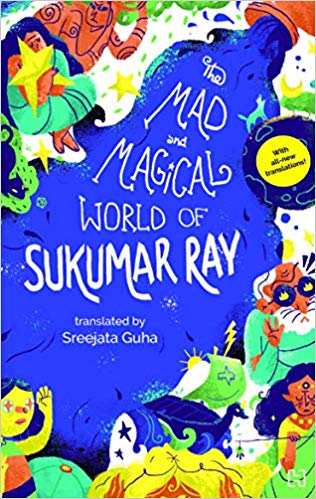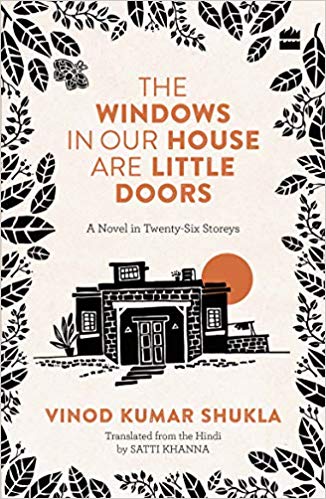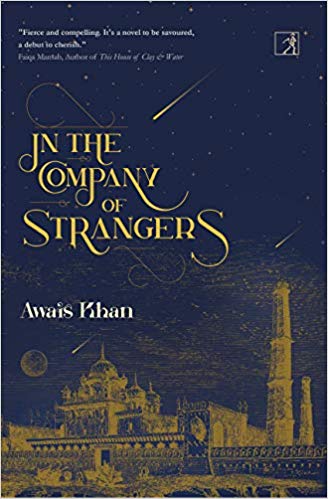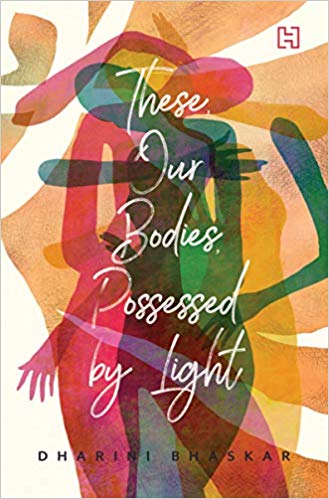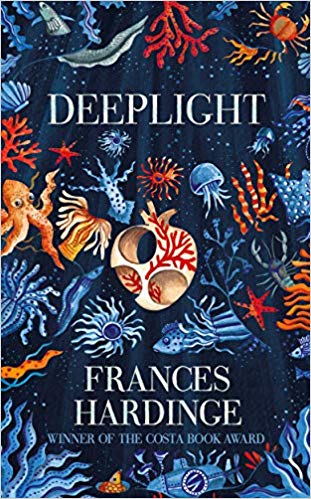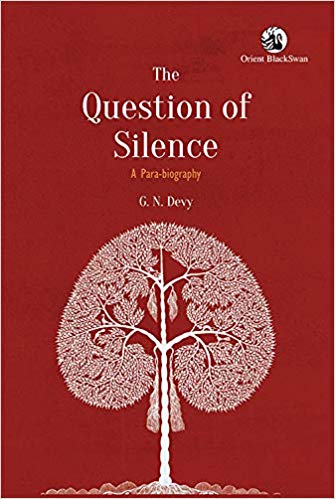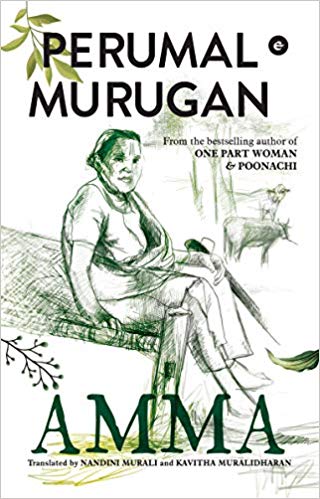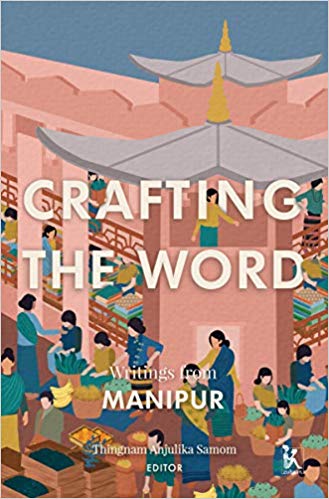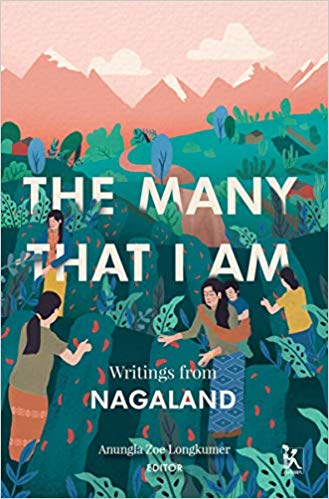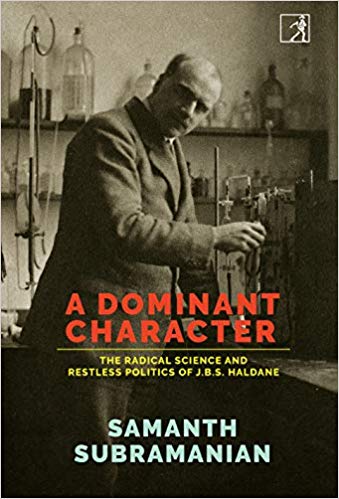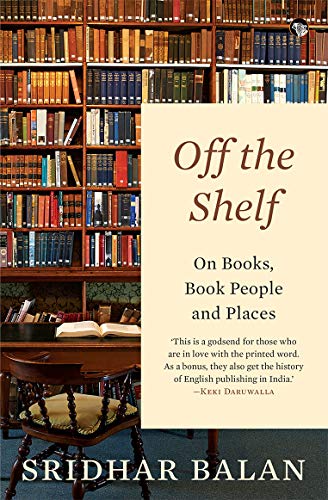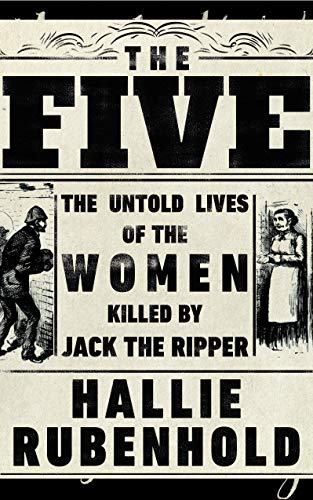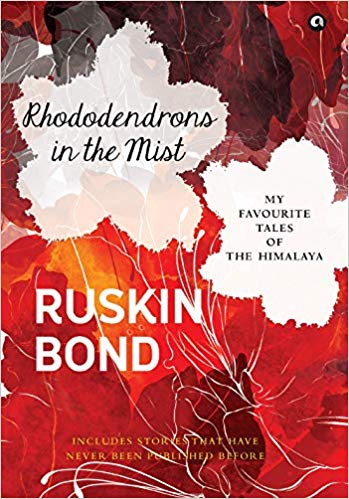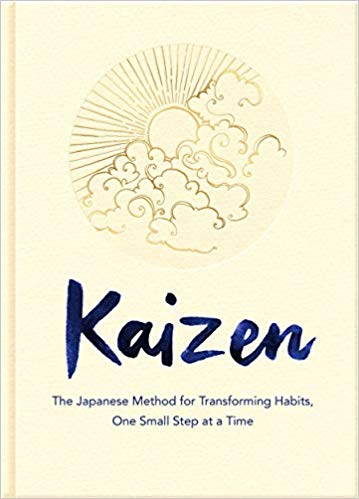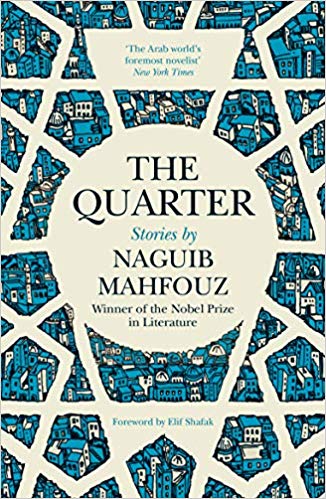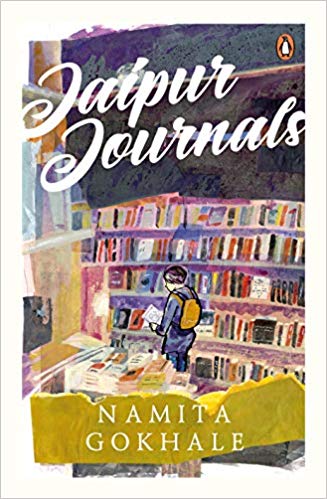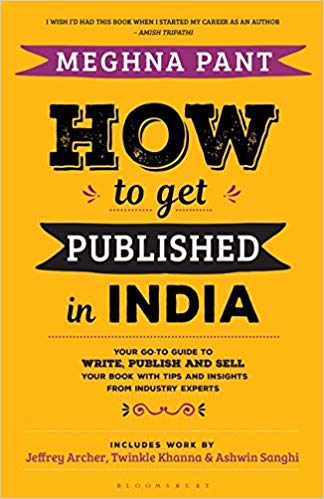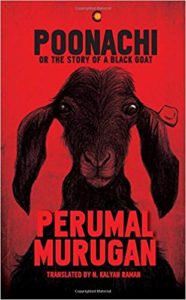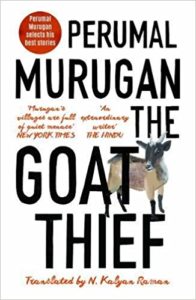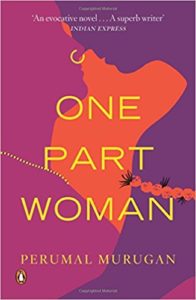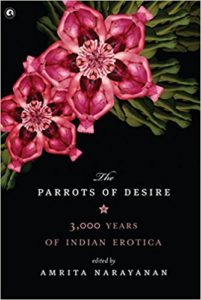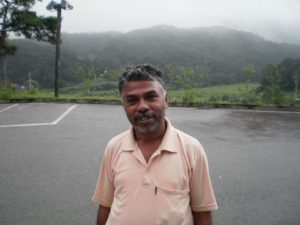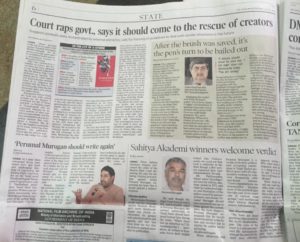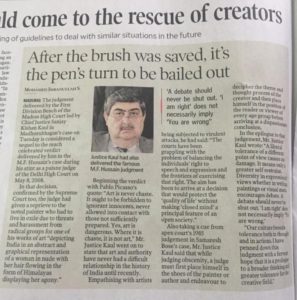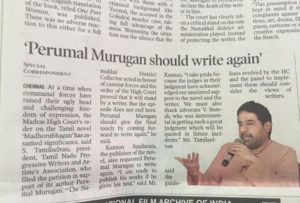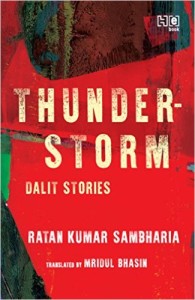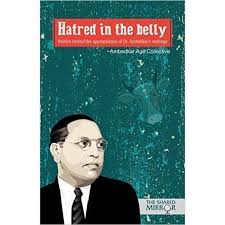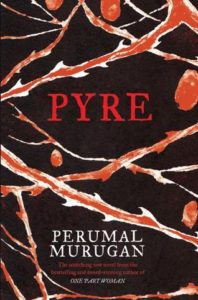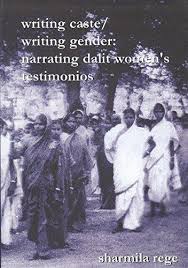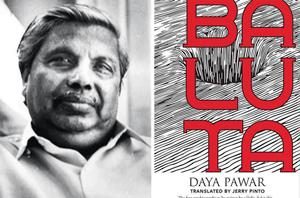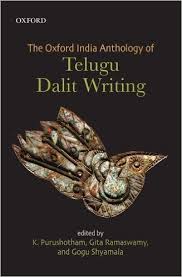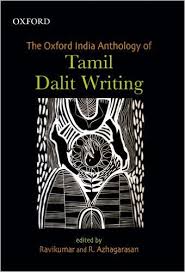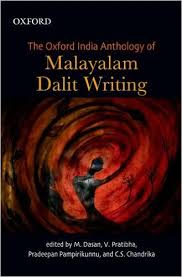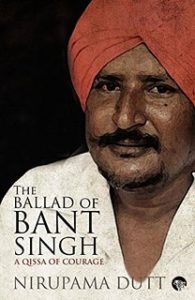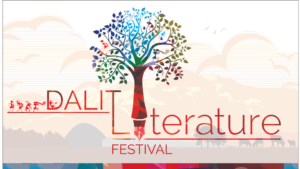Interview with Nandini Krishnan, translator of Perumal Murugan’s novel “Estuary”
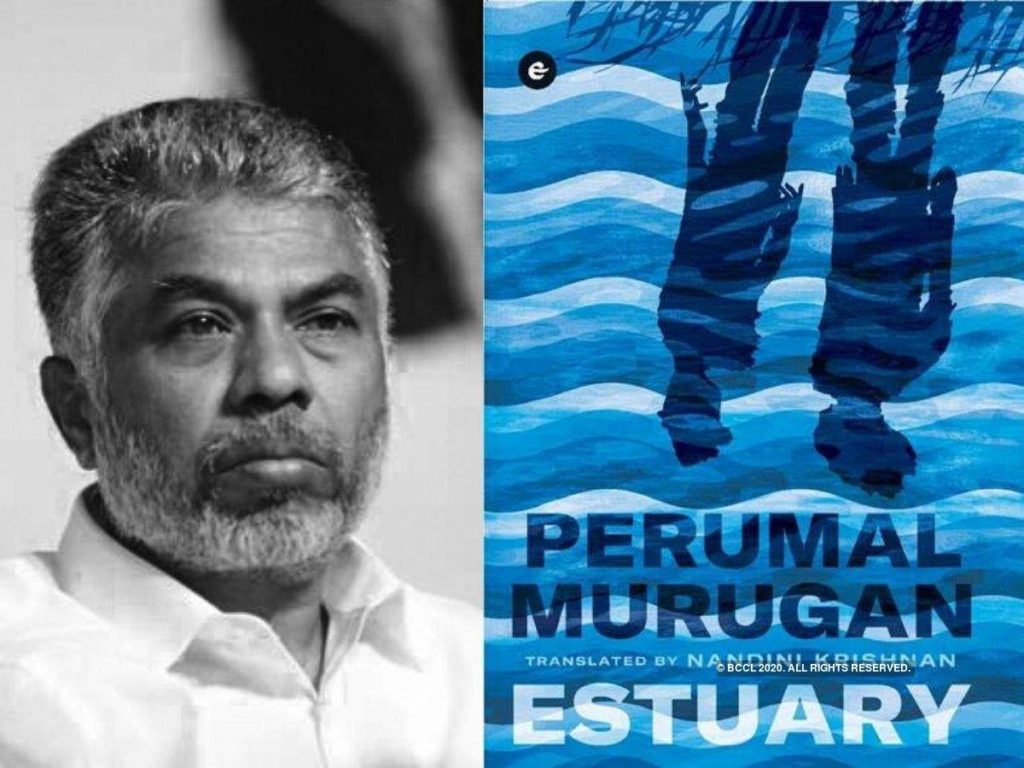
Award-winning Tamil writer Perumal Murugan’s latest novel Estuary has been translated by Nandini Krishnan. Estuary is a curious book. Flat in its tone but the preoccupation of the government clerk Kumarasurar for his son, Meghas’s, welfare is universal. Many parents will identify with it. Perumal Muruagan captures the parental anxiety very well. Bulk of the story revolves around Meghas’s request for a fancy smartphone that Kumarasurar may or not be able to afford. It sort of is in step with Kumarasurar’s general anathema towards electronic devices. It is illustrated well in his locking up the government issued computer into a cupboard instead of using it. It is only when he is introduced to the vast possibilities browsing the Internet can unleash that Kumarasurar begins to understand the younger generation’s fascination with smartphones too. The enthusiasm of the younger man for edevices rubs off on to his father, a Luddite where digital technology was concerned, and transforms Kumarasurar into a new man.
Estuary is a commentary on society and a gentle dig at people who are immune to external influences and refuse to evolve. Estuary drives home the point beautifully that as the elder person you must evolve even if it means graciously acknowledging your limits. By stonewalling and refusing to understand the needs of the younger generation, you will merely alienate them and perhaps lose them forever. In a peculiar way Estuary is a bildungsroman but not of the young man Meghas but that of his father. So the metaphor of “Estuary”, the mixing of the salt water with fresh water, works beautifully in the conclusion of the book, when tables are turned where the father now hankers after the smartphone unlike his son.
Estuary is contemplative and relatable. But as with many translated works, credit has to also be accorded to the translator. Namely, Nandini Krishnan. I am unable to pinpoint what exactly it is, but her translation really soars. The sentences click. There is a rhythm but it is ever so slightly different to that of reading a text written originally in English. Yet the translation is breezy. At no point does one get the feeling that the translator is getting carried away with their art and losing the author. On the contrary. Her respect for the storyteller and his story comes through. I do not even know how to explain that any further than except urge others to read the book. Of course there are instances in the book where the dreariness and monotony of Kumarasurar’s anxiety gets to the reader. The dullness of the storytelling is an art in itself and probably intentionally created by Murugan. At such moments in the novel the only reason for reading further is the exquisite quality of translation.
Nandini Krishnan is the author of Hitched: The Modern Indian Woman and Arranged Marriage (2013) and Invisible Men: Inside India’s Transmasculine Networks (2018). Perumal Murugan’s Estuary is her first translation from Tamil. She lives in Madras, among nine dogs, eight cats, and several thousand books!
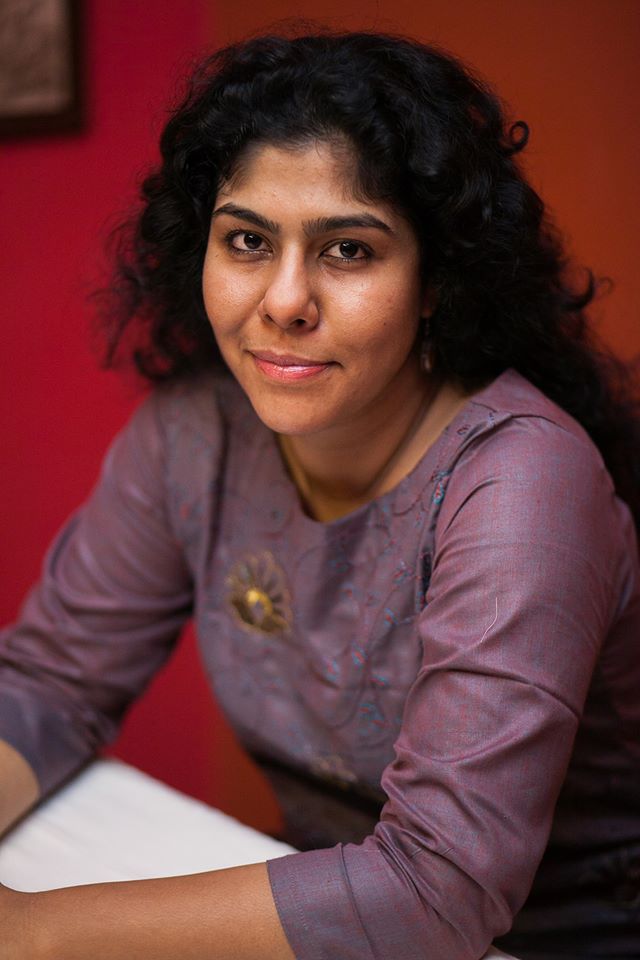
Here is an interview with her conducted via email:
Q1. How long did it take to translate Estuary?
It’s hard to calculate the man hours, but going by the calendar, I started in November 2019 and the novel went to print in May 2020. I’d promised V K Karthika, Publisher, Westland Books, that I would have a first draft ready in a month so that Westland could publish the following summer. And so, I pushed aside all my other writing projects and dedicated myself entirely to the novel. Of course, I had read it twice already, and had perhaps translated it in my head to some extent. I must have spent between five and eighteen hours on Estuary each day, depending on the sections I was doing. I had a break until they got back to me with a line edit and copy edit, and that was another intense period of immersion in Asuralokam.
Q2. What was your methodology in translating? For instance, did you translate it in snatches, refine and then proceed or did you first translate the entire novel and then edit it further?
Actually, all of the above!
I had a very tight self-imposed deadline, and I had to translate at least one chapter a day, more if I could. If I had doubts or dilemmas about which words to use, I would shortlist my options in parentheses to deal with later.
I’d take a few hours off to get mauled by my dogs and then return, entice my kitten off my laptop with food, and start restructuring and rephrasing each sentence after comparing it with the Tamil original.
Once I was done with all forty chapters, I took two days off, and then spent a few more days re-reading and editing the entire novel.
By the time it came back to me with a line edit, I had made a new document with notes on which words I must replace in the first draft, after yet another re-read of the original and my translation. So my second and third drafts were done with at least four windows open at once on the computer. While I was waiting for a final copy edit, I read the Tamil novel for maybe a fifth time, so I ended up doing a fourth draft of the entire novel before it was typeset.
Q3. Do you pause and read other translations while working on a project?
As you can probably tell from my previous answer, I don’t really have a pause mode. But I can’t eat or sleep or even sit without a book in hand, so I’m always reading. Some of the books I read while working on Estuary—and indeed my own books—were or are, inevitably, translations.
Perhaps I’m a little more tuned in to a translator’s role in my reading as well, now that I’ve translated a book. While reading Banaphool’s Wildfire (Seagull Books), translated by Somnath Zutshi, I found myself analysing the translator’s craft in particular—something I haven’t consciously done before.
Q4. What are the pros and cons a translator can expect when immersed in the translation?
I used to be fond of saying that I’m in something of a trance when I write fiction, that I write intuitively and it feels as if I’m simply a medium for a story that wants to be told. But I began to rethink this when I heard Akhil Sharma—a writer I admire hugely—talk about how only writers can sense the craft in his novels, at the Festivals des Écrivains du Monde, 2014, in Paris. He went on to analyse some of his sentences, and the use of a particular word instead of a synonym. For the first time, I found myself applying this principle instinctively, and could relate to what he’d said. This exercise really develops your language and craft.
I also feel being in such a long relationship with a work of literature in another language makes a certain cadence percolate one’s own language and enrich it. I can speak only one language so that it can be understood by its native speakers—English—but I read many, and therefore I can access various literatures in the original. I find that each new language adds a layer of nuance to one’s thinking and a lilt to one’s vocabulary in other languages, rendering one’s writing more versatile and one’s imagery more vivid.
I’m making the first of many references to Vikram Seth in this interview, but I think the beauty of his English has a lot to do with his being not just a polyglot, but also a translator.
The only “con” is the sense of heartbreak at the end. As mother of a houseful of dogs and cats, I can make something of a comparison to fostering a fur baby. You love this little puppy that needs you for nourishment, and he or she loves you too, but then you’re always aware you’re not the parent and that you eventually have to let go.
Q5. Did you have to consult Perumal Murugan during the translation?
I have a funny story to tell you. The first time I spoke to him about the translation, he asked me, “Andha pagadiye aangilathule konduvara mudiyumaa?” which means, “Will the pagadi translate into English?”
And it was a most inauspicious start because I had to ask sheepishly, “Sir, what does ‘pagadi’ mean?” He explained that it was parody, and then said, “You must have heard people say ‘pagadi-ya pesuvaan’—he is sarcastic—surely?” I had to admit I never had. I did a quick survey around my house and told him none of the Tamil speakers in my family had heard of the word either, and he began to laugh. He must have thought about how different the milieus in which we were raised are. My only brush with rural life has been through cinema and literature. And although I studied Tamil for thirteen years in school and college, I find it easier to translate Sangam poetry than contemporary literature because the syllabus was partial to the former.
Now, Perumal Murugan uses certain words and describes certain traditions which are so particular to a region that even Tamil dictionaries draw a blank. So he was often my only dictionary and encyclopaedia. I also consulted him when I had to make a choice between two phrases or idioms—I would translate the English literally into Tamil and ask him which he preferred.
I had the advantage of having read nearly all his Tamil novels and several of his short stories, because of which I’m tuned in to his style and rhythm. I’ve met him in person often, and I can hear his writing in his voice, which helps me render it with some authenticity into English.
Q6. Has your translation been absolutely faithful to the original Tamil text or did you (with the concurrence of the author) have to tweak portions of the novel?
That’s a layered question, and it deserves a layered answer.
Let me assemble the first layer with an example. The opening lines in Tamil are:
Yaman azhaippu urudhi
Magan azhaippu aridhu
Now, even if you don’t understand Tamil, you can feel the music and sense the significance of wordplay in those lines. This is a crucial aspect to carry into the translation.
“Azhaippu” can mean both “call” and “invitation”. “Aridhu” means “rare”, but also has the connotation “precious”. This is another crucial aspect to carry into the translation.
It would be impossible to be absolutely faithful to the sense of irony and the semantic meaning of the first line. If I were to write “Yama’s invitation is certain”, the reader would be bewildered. I eventually went with “The call of Yama is certain”, but this doesn’t contain the wryness of the Tamil sentence. So I would have to find a way to bring that into the next line.
I also had to bring in the musicality of the two sentences, almost a couplet. If I were to write, “The call of Yama is a certainty. A call from one’s son is a rarity”, it would sound like those cringe-worthy traffic police slogans—you know, “Accident brings tears, safety brings cheers” or “Rash driving is crash driving.”
I had three options for the second line—“A call from one’s son is rare”, which is faithful to the semantic sense; “A call from one’s son is cause for celebration”, which is faithful to the emotional connotations; “A call from one’s son is an event”, which was the Goldilocks mean for me. It conveys the meaning and emotion; it has almost the same syllabic count as “The call of Yama is certain”. The last word of each sentence is dental, with emphasis on the
“t” and “en” sounds. And the second sentence contains the wryness that I wasn’t able to bring into the first, so the “couplet” works in translation.
Now, for the second layer—there are various vocabularies to be translated, because the third-person narrative is not always the author’s voice. Sometimes, it is a disguised first-person narrative. When the third-person narrative describes a character’s thoughts, it often assumes the voice of that character. I had to translate that character’s vocabulary accurately.
There are lyrical passages and empathetic ones and scholarly ones and playful ones, all of which carry Perumal Murugan’s signature. Then, there are passages in Kumarasurar’s voice. This man is a government employee who believes he is a gifted poet. But Perumal Murugan does not appear to think too highly of Kumarasurar’s poetic sensibilities. When Kumarasurar’s thoughts are narrated, his whimsical self-indulgence is interrupted by another tone—imagine a man who spends most of the day typing letters that probably go something like, “Dear Sir/ Regarding the statistics requested by you, kindly find enclosed forthwith the numbers as also a circular issued by the Department of Revenue regarding…/Kindly acknowledge receipt of the same.” The drudgery of this, the monotony will naturally seep into his thoughts too, and this is illustrated by flatness in tone. As for Mangasuri, she probably spends most of the day watching television soap operas and devotional programmes, and therefore she has a tendency to make dramatic pronouncements and perhaps imagines her reactions to be replayed twice. Meghas is clearly a caring son, but also has the impatience, quickness, and dry humour of an intelligent teen dealing with wide-eyed parents.
This is why the foreword is so important—when Prof. Murugan speaks of “deviance”, he could be referring to this little game he has played, where not just the vocalised dialogue but the internal dialogue too is in the voices of his characters.
And the voice of the narrator is not uniformed either. Sometimes, the author has a twinkle in his eye. Sometimes, he is seething with rage. And in the tightness of his clipped sentences, one feels the immense pain and fear he underwent during his years of exile.
So to be truly faithful to the novel, I had to extrapolate the lives of all the characters as well as the author himself, and rent some space in his head for the duration of the translation.
Q7. In an article you said that there were portions of the text you had enjoyed so much that you could recite them from memory. I found that such an extraordinary comment. As if you were more than just a translator but channelling it before making it your own and yet very clear that it was a Perumal Murugan story. So, what are your favourite sections in the novel? Does it have to do with the story or the style of storytelling? And the fondness that you have for these sections remain true for Tamil and English or only in Tamil?
I’m gratified by what you said about the translation. I haven’t quite articulated my modus operandi to myself, but you put it quite beautifully.
Initially, my favourite sections in the novel were perhaps the ones I translated for Kannan Sundaram, Kalachuvadu, Perumal Murugan’s Tamil publisher, to pitch to prospective English publishers, even before the translation was commissioned—the opening chapter where Kumarasurar goes on his morning walk, his analysis of the seven questions he asks his son, their visits to these draconian colleges with over-the-top controlling mechanisms for their students, reports on selfies causing accidents, and the chapter where Kumarasurar has a psychotic episode. But one sentence hit me so hard I had to put the Tamil novel aside—it is the moment when Kumarasurar goes to bring Meghas home on the last day of school and hears of a “curated cemetery”. The paragraph about students passing away in college and their families not being informed about it comes out of nowhere, and it breaks the reader. I would not call it a “favourite”, because one would have to be particularly perverse to enjoy that scene, but I felt a great sense of responsibility because the English paragraph had to be as powerful.
Having completed the translation, I think my favourite chapter is the one which describes Kumarasurar’s second visit to the estuary. I’m satisfied that I have captured the tone, imagery, mood, and undercurrents in this very complex portion, and it is my greatest triumph with the novel.
To explain why I like these sections so much, I have to make an admission. When I read the Tamil novel for the first time, I kept searching for the Perumal Murugan I knew and couldn’t find him. It seemed such a mild novel, without the bite of his previous work. The premise seemed so light. I knew I was missing something, because Perumal Murugan wouldn’t write a simple story about the generation gap. So I read it again, and only to realise that was not the subject of the novel at all. It is, in some ways, a microcosmic, twenty-first century parallel to A House for Mr. Biswas, a quiet yet searing contemplation of the wrenching failure of an unremarkable life, the devastation of a man who was once the talk of town at the notion that he might be the only one who imagines that he is important.
It took me, an avid admirer of Perumal Murugan, two readings and a lifetime’s consumption of his works to understand the essence of the novel. His English readership has only received him in translation, and so far, his plots have stood the test of language. This novel is a work of art which is carried as much by style as by story. These sections were the ones that brought this fact home to me, and they were my own pookkuzhi—trial by fire. Because, unlike Prof. Murugan with me, I would have only one shot with the reader. And both he and Kannan had placed a lot of faith in me by insisting that I be the translator. I had to repay that trust by conjuring the same magic in English, and by fighting over every word on behalf of the writer.
I was terribly nervous until a brilliant review by Saudamini Jain in the Hindustan Times reassured me that my job was done. So, with a smug little pat on my own back and a sheepish smile, I can confess that I like the sections in both Tamil and English.
Q8. How do you assess/ decide when to take on a translation project?
To be honest with you, money is an important consideration. Respect and transparency are others. I’ve taken on two translation projects so far, and both were largely because of how beautifully both editors wrote to me and how my interactions with them made me feel.
This is particularly relevant because I’ve had unpleasant experiences with representatives from tight-fisted publishing firms who’ve tried various tactics to get me on board. It feels almost like you’re being sold insurance, really. Or dealing with an HR person who’s trying to convince you to stay on after a pay cut. “See, you have to look at the unquantifiable factors. Think of what this could do for your career.” “Our profits have taken a beating this year. We need people like you to pitch in at this critical time.” “Think of this as a service you’re doing a profession that you love.” “This is actually a much better deal than anything we’ve offered anyone else.” “You need to be realistic here.” “If you don’t want it enough, I can’t do anything except say we’re sorry to see you walk away from an opportunity.”
This is yet another reason I admire Vikram Seth—he has never allowed the publishing industry to dictate his worth to him, and he has justified every penny spent on him. He has taught writers that weighing one’s efforts is not mercenary. I also owe Jeet Thayil for this—he’s one of the kindest, most generous people I know, and perhaps an unconscious mentor to writers who are just about finding their feet. From him, I’ve learned not to be embarrassed about asking for what ought rightly to be offered.
Q9. How would you define a good translation?
A good translation must strike a fine balance—it should not read like a translation, but should also carry some of the flavour of the original. The reader must hear the syllables of a language that is not-quite-English and yet not explicitly so. He should feel he is exploring, but never be lost. I guess it’s like holidaying in an exotic country and staying at a resort that caters mainly to tourists.
Often, the choice or arrangement of words can give the reader a whiff of an unknown language. For example, if I were translating from French, I may go with “armoire” over “cabinet” or “cupboard”, and “boudoir” over “dressing room”, because these are French words assimilated into English. If I were translating a Hindi novel, I wouldn’t change “Dadima” to “Granny” or “Jiju” to “brother-in-law”. If it were a Delhi novel, I’d make sure I used “By god” instead of “I swear” and “Mom-Dad” instead of “my parents”.
If you read the first few pages of Naguib Mahfouz’s Palace Walk, you feel the place might as well be London as Cairo. This is perhaps because most of his early works were translated by teams—someone would translate it literally, someone else would correct the grammar, and yet someone else would Anglicise it for a global readership. The work that kept coming to mind when I visited Egypt was Alaa Al-Aswany’s The Yacoubian Bulding. It was translated by Humphrey T. Davies, who has been based in Cairo for decades.
Q10. Can the art of translating be taught? If so, what are the significant landmarks one should be aware of as a translator?
A translator is really a writer who is fluent in more than one language. I don’t believe writing can be taught. Perhaps one can find the tools to be a better writer, but it is also an instinct, a flair. One can always tell which translators are creative writers in their own right.
If you’ll forgive yet another analogy, I might liken a translator to an artist who is creating a portrait. One’s craft must come into play, but the artist must not encroach into the territory of the creator of the original. He cannot make the model’s nose sharper, and cannot afford to miss a single sinew. The artist may be Picasso, but this is not his palette for expression.
Often, translations fail either because the translator is not a writer or because the translator is a writer whose footprint contaminates the original author’s.
A case in point is Salma, whose novels and poetry in Tamil have not been done justice in English. Many of her translators focus on the “shocking” aspect, without contextualising her work within their milieu. The shock value is incidental to Salma’s craft. It is also a pitfall to see her work through the prism of one’s own politics, of gender or religion. It would be far more important for the translator to ask himself: “Can the reader hear the language of a Tamil Muslim household?” “Should I say ‘death’ here or retain ‘mowthu’ or use the uncorrupted Urdu original ‘maut’?”
Q11. Do you think there is a paradox of faithfulness to the source text versus readability in the new language?
No. I think poor translations exist because most publishing firms sacrifice literary value at the altar of profit margins.
A skilled translator will find ways to make any sentence work. If you think about it, even books written in English but set in a milieu where English is not spoken contain the dialogue in translation—such as Junot Diaz’s entire oeuvre and a fair bit of J M Coetzee’s and Kazuo Ishiguro’s A Pale View of Hills. An example that comes to mind right away is a line from Amit Chaudhuri’s Freedom Song, where two friends are speaking to each other:
‘You should get a walking-stick, Mini,’ said Khuku. ‘It’ll be much easier for you. Your leg,’ and in Bengali the words ‘tor pa’ sounded so affectionate, as if she were referring to her leg as if it were her daughter, ‘won’t have to take the weight.’
I remember reading this when I was in college, and thinking “If I ever have to translate the phrase kaadhal-kathirikka, this is what I will do.” Google Translate will tell you I’ve written “love-eggplant”.
We’re fond of repeating received notions, like “English can never have the beauty of the mother tongue” or that the elegance or poetry in prose is lost in translation, without analysing them for truth. As someone with no real “mother tongue” and a passion for languages, I feel English is the most beautiful language I know, because it absorbs something of every other language I learn—it is my home, which somehow accommodates souvenirs from around the world.
Q12. What are the translated texts you uphold as the gold standard in translations? Who are the translators you admire?
My favourite translator is Vikram Seth—he translates not only between languages, but between genres and disciplines and art forms. Who else would marry music and calligraphy and poetry (as he does in The Rivered Earth)? His Three Chinese Poets, from which I recently read poems, is a revelation to me—he dismantles and reassembles poems to stay faithful to rhythm and sense and imagery. He seems to be my gold standard in everything, no? J But we had poems from Beastly Tales when I was in Class 6 and 7, and I can never forget “Neither stones nor prayers nor sticks/Insults or complaints or bricks/Stilled the frog’s determination/To display his heart’s elation.”
In terms of translated texts I admire, I thought Aniruddhan Vasudevan achieved the near-impossible with his translation of Lara Fergus’ quite stunning My Sister Chaos. He translated it into Tamil as Izhappin Varaipadam, and the sections I read were just as stunning. Mr Kalyan Raman’s translation of Ashokamitran’s Manasarovar carries all the heartache and intensity and ethereality and complexity of the original.
I’m not sure it would be fair for me to speak about translated texts whose source language I don’t read, but I enjoyed Srinath Perur’s translation of Vivek Shanbhag’s Ghachar-Ghochar, Rimli Bhattacharya’s translation of Bibhutibhushan Bandyopadhyay’s Aranyak, Arunava Sinha’s translation of Sankar’s Chowringhee, all of Maureen Freely’s translations of Orhan Pamuk, and all of Howard Goldblatt’s translations of Mo Yan.
6 August 2020

